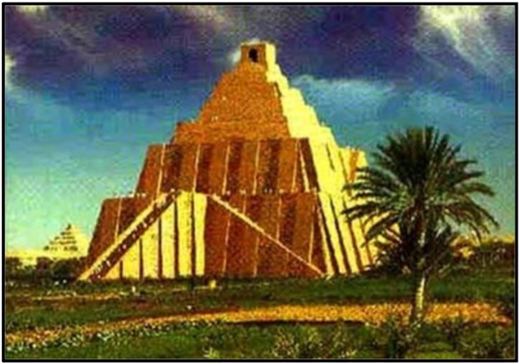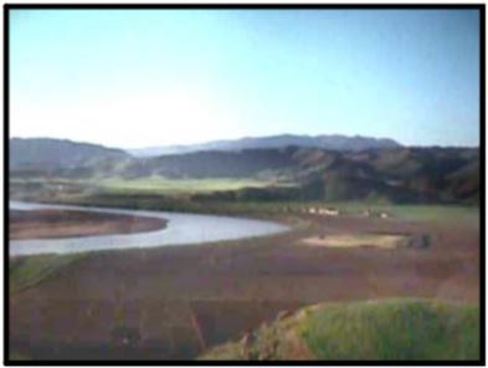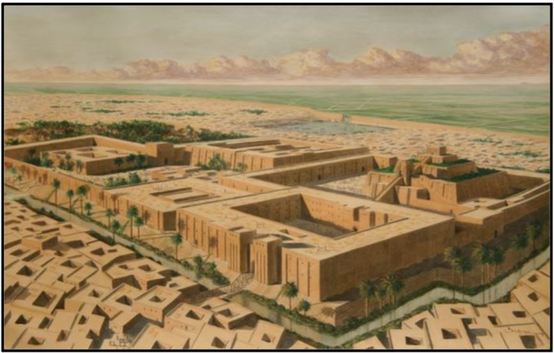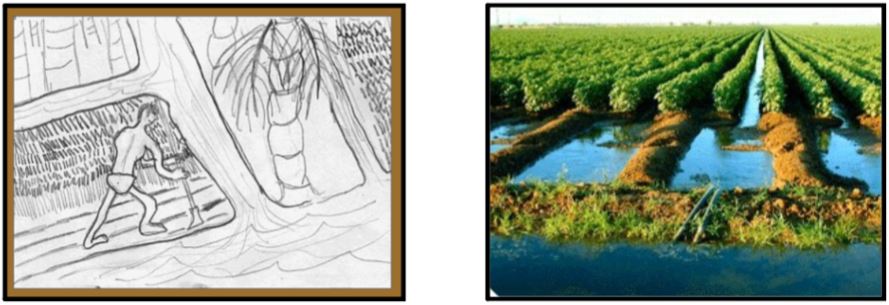Mesopotamia Geography

Essential Themes
Geography: Why do people move and live where they do?
Today, you will take a quick tour of Mesopotamia and talk about its geography and natural barriers. Geography is the study of how humans interact with their environment. Natural Barriers are geographic features of a landscape that make crossing that land difficult. Examples of natural barriers are rivers, mountains, deserts, ice fields, and seas.
Sometimes natural barriers isolate an area, which doesn’t sound good, but isolation might also provide some security to a region. While you complete this quick tour of ancient Mesopotamia, try to pick out its natural barriers. Think about whether or not those natural barriers helped the ancient Mesopotamians who settled there and built the world's first civilization thousands of years ago.
Geography: Why do people move and live where they do?
Today, you will take a quick tour of Mesopotamia and talk about its geography and natural barriers. Geography is the study of how humans interact with their environment. Natural Barriers are geographic features of a landscape that make crossing that land difficult. Examples of natural barriers are rivers, mountains, deserts, ice fields, and seas.
Sometimes natural barriers isolate an area, which doesn’t sound good, but isolation might also provide some security to a region. While you complete this quick tour of ancient Mesopotamia, try to pick out its natural barriers. Think about whether or not those natural barriers helped the ancient Mesopotamians who settled there and built the world's first civilization thousands of years ago.
What is Geography?

Where is Mesopotamia?
Mesopotamia sits in the Middle East at the intersection of Europe, Africa, and Asia, where Iraq is today.
Mesopotamia is known by a few nicknames such as “The Fertile Crescent” and “The Cradle of Civilization.” Another name for Mesopotamia, though, is “The Land Between the Rivers.” In fact, the word Mesopotamia, derived from ancient Greek, means “the land between the rivers."
In this case, the rivers are the Tigris River and the Euphrates River. The Tigris is east of the Euphrates or, if you’re looking at a map, it’s to the right side of the Euphrates.
Both rivers flow out of the Taurus Mountains to the north and, after traveling over a thousand miles through what is mostly desert, they flow into the Persian Gulf to the South. To the east, Mesopotamia is bordered by the Zagros Mountains.
The land of Mesopotamia, then as now, is mostly desert and rarely receives more than about 12 inches of rain per year. Mesopotamian deserts include the Syrian Desert and the Arabian Desert.
Mesopotamia sits in the Middle East at the intersection of Europe, Africa, and Asia, where Iraq is today.
Mesopotamia is known by a few nicknames such as “The Fertile Crescent” and “The Cradle of Civilization.” Another name for Mesopotamia, though, is “The Land Between the Rivers.” In fact, the word Mesopotamia, derived from ancient Greek, means “the land between the rivers."
In this case, the rivers are the Tigris River and the Euphrates River. The Tigris is east of the Euphrates or, if you’re looking at a map, it’s to the right side of the Euphrates.
Both rivers flow out of the Taurus Mountains to the north and, after traveling over a thousand miles through what is mostly desert, they flow into the Persian Gulf to the South. To the east, Mesopotamia is bordered by the Zagros Mountains.
The land of Mesopotamia, then as now, is mostly desert and rarely receives more than about 12 inches of rain per year. Mesopotamian deserts include the Syrian Desert and the Arabian Desert.
How did irrigation help Mesopotamia's early settlers?
 Much of the land around the Tigris and Euphrates looks the same today as it did when the first settlers arrived 10,000 years ago.
Much of the land around the Tigris and Euphrates looks the same today as it did when the first settlers arrived 10,000 years ago.
Why Mesopotamia?
Drawn by the promise of the two rivers, by about 8000 BCE, that’s “before the common era,” communities based on agriculture and the domestication of animals were already being established in northern Mesopotamia. These agricultural communities were permanent settlements.
The Tigris and Euphrates Rivers made the soil of Mesopotamia good for growing crops, and by 6000 BCE farmers had already started to rely on irrigation rather than on rainfall to grow crops. Irrigation is a system of canals leading from the rivers to the fields. With the development of irrigation, people turned from being controlled by the environment to being able to change their environment. As a result, communities began to push further and further south along the Tigris and Euphrates Rivers until, between 3500 and 3000 BCE, true cities emerged.
Drawn by the promise of the two rivers, by about 8000 BCE, that’s “before the common era,” communities based on agriculture and the domestication of animals were already being established in northern Mesopotamia. These agricultural communities were permanent settlements.
The Tigris and Euphrates Rivers made the soil of Mesopotamia good for growing crops, and by 6000 BCE farmers had already started to rely on irrigation rather than on rainfall to grow crops. Irrigation is a system of canals leading from the rivers to the fields. With the development of irrigation, people turned from being controlled by the environment to being able to change their environment. As a result, communities began to push further and further south along the Tigris and Euphrates Rivers until, between 3500 and 3000 BCE, true cities emerged.
What resources did the Tigris and Euphrates provide the people who settled "the land between the rivers?"
 The resources of the Tigris and Euphrates gave rise to some of the world's first cities.
The resources of the Tigris and Euphrates gave rise to some of the world's first cities.
The cities that developed in Mesopotamia were mostly concentrated in the South, near the Persian Gulf, and included such powerhouses as Ur, Uruk, Lagash, Eridu and, later, Babylon. The growth of cities along the banks of those two great rivers, the Tigris and the Euphrates, depended on the ability of the farmers to use the Tigris and the Euphrates to develop robust agriculture throughout the region. Because of the acres and acres of green crops in the middle of the desert, Mesopotamia became known as the “fertile crescent.”
You might think living in ancient Mesopotamia, surrounded by deserts and mountains, would be an awful place to live. The Tigris and Euphrates rivers, however, provided early settlers in Mesopotamian all they needed to survive and prosper. The rivers provided water for drinking, bathing, and irrigating crops. The rivers also provided an abundance of fish and water birds, such as ducks and geese, for eating. The mud along the banks of the rivers provided clay for pottery and materials for brick making. Due to the resources provided by the Tigris and Euphrates rivers, the Mesopotamians were able to develop agriculture, which led to a food surplus, permanent mud brick dwellings, and specialized workers. Together, those three things led to a more complex society and the birth of "civilization."
Now, how many of the “natural barriers” that are a part of Mesopotamia can you name?
You might think living in ancient Mesopotamia, surrounded by deserts and mountains, would be an awful place to live. The Tigris and Euphrates rivers, however, provided early settlers in Mesopotamian all they needed to survive and prosper. The rivers provided water for drinking, bathing, and irrigating crops. The rivers also provided an abundance of fish and water birds, such as ducks and geese, for eating. The mud along the banks of the rivers provided clay for pottery and materials for brick making. Due to the resources provided by the Tigris and Euphrates rivers, the Mesopotamians were able to develop agriculture, which led to a food surplus, permanent mud brick dwellings, and specialized workers. Together, those three things led to a more complex society and the birth of "civilization."
Now, how many of the “natural barriers” that are a part of Mesopotamia can you name?

